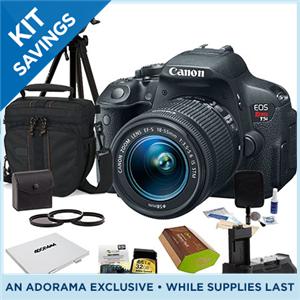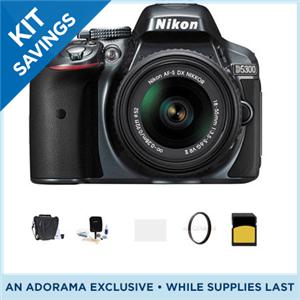Product Photography 101: Choosing a DSLR

As with everything else in the world of electronics, choosing the right DSLR (Digital Single Lens Reflex) camera can be just as difficult as choosing the next computer for your office. With multiple models from many manufacturers, making the right choice can be a daunting task. With a little effort up front, you’ll soon be ready to shoot like (or at least look like) a pro!
Features to Look For in a DSLR
- RAW option: This is a setting on your camera that allows you to shoot RAW, or uncompressed, photos. Lower-priced DSLR cameras don’t offer this option, and only allow you to shoot photos as JPEGs, which don’t allow as much opportunity for editing. In the meantime, you can start shooting in automatic mode, which will create JPEGs for you.
- Lens: Most DSLRs come with a “kit lens” that offers a focal length (size of lens and angle of view) of 18-50 mm or 18-55 mm. For the casual photographer, the kit lens offers a wide enough selection of focal lengths to cover family photos, some sport photos, and even some macro (close up) photography. What that means for you and your products as you begin this journey of product photography, is that it is possible to begin shooting your products with the camera body and the kit lens right out of the box.
- Aperture, shutter speed, exposure and white balance: These are all features that your DSLR includes. When you take photos in RAW, you’ll be able to change these settings, some even after you take the actual picture. (This is one reason why we recommend going with a camera that has this RAW format setting.)
Recommended Cameras
Based on our research and experience, DSLR cameras range in price from $700 to over $5,000, but most cameras between $750-$1000 will do the trick for your product photography needs. Here are three recommended DSLR cameras in the $750: $1000 price range:
 | Canon EOS Rebel 5i, $749 after $100 rebate |
 | Nikon D5300, $796 after $100 rebate |
 | Pentax K-50, $749 |
Additional Equipment
You will need to purchase some additional supplies before you begin photographing your products:
Memory card: This will be needed to store your photos until you can get them onto a computer. Your camera will come with a cable that will connect to your USB port, but connecting your camera directly to your computer will use up your camera’s battery much faster than putting the memory card into a card reader. Purchase a card with the greatest amount of storage as you can afford and your camera will support.
Since you’re more than likely be photographing stationary items versus recording videos, the recording speed of the card shouldn’t matter as much as the space. A good starting point for storage is around 32 gigabytes. Prices for cards can range from $20 to well over $150.
- Camera bag and cleaning kit: These will protect your camera and keep it in good shape. Most cameras come with suggested camera bags and cleaning kits.
- Tripod: A tripod is used to stabilize and elevate a camera. All photographic tripods have three legs and a mounting head to connect with a camera.
Test Drive
The last thing you’ll want to do is go for a test drive, so to speak. Find a great camera retailer near you, walk in, and ask lots of questions. Ask to hold any camera you’re interested in. Push the buttons, look through the viewfinder, see what appears on the LCD screen. You won’t know if a camera’s setup is right for you unless you touch it, feel it, smell it…you get the idea.
Lastly, ask the store if you can take that model outside and shoot a few pictures with it to see how it really feels in your hands. Once you’ve decided on a model, ask about rebates, warranties, repairs, and if there are any packages available with the model you like that may include the other items mentioned above. That may save you a few bucks in the front end.
Don’t forget, you can also purchase your new camera online. Retailers such as Adorama and B&H Photo have great online stores and often assemble comprehensive packages for their customers.
What’s left? Check out the cameras that interest you within your budget, make sure all the control options you want are there, then go and play before you buy. Next, shoot, shoot, shoot! In this case, practice will make perfect. Your products will thank you.


